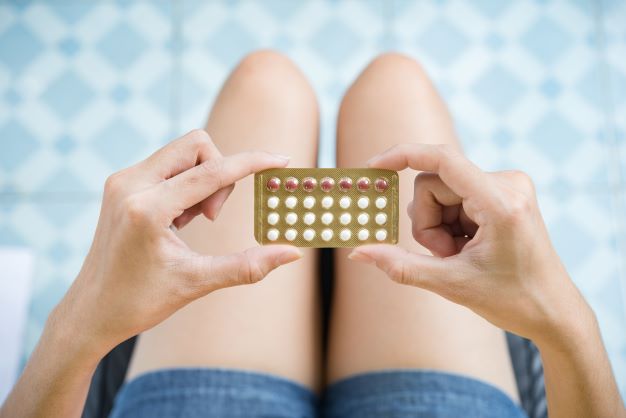A Woman’s Ultimate Guide to Holistic Perimenopause Treatment
This is a woman’s ultimate guide to holistic perimenopause treatment. Are you aged 35+ and noticing changes to your bleeding, cycle, skin, mood, weight or sleep? Perimenopause is on the horizon for you and this article outlines the foundations for thriving through perimenopause and beyond.
Contents
What is perimenopause?
Perimenopause is the normal phase in a woman’s life when her body starts to transition from reproductive adulthood into menopause. It can begin anywhere from the mid 30s to the early 50s. It ends with menopause – the cessation of menstrual periods – the end of the reproductive years. A woman is said to have experienced menopause 1 year after her final period.
Hormonal perimenopause can continue into the late 50s. This is the phase when ovarian production of hormones winds down to a low level similar to pre-puberty.
Perimenopause is a transition phase like adolescence (the transition from childhood to adulthood) and matrescence (the transition to motherhood). Each of these transitions encompass multiple domains of a woman’s life including:
- Biology: hormones, metabolism & physical symptoms
- Psychology: how she thinks and feels about herself, her self-identity and the world
- Social/Community: her important connections to others in her community, changes with relationships and roles at home and work
- Political: a woman’s place and value in her society as she moves from reproductive capacity to a non-reproductive phase and how she feels about this.
- Spiritual: her ongoing creativity, discovery and connection to purpose and meaning in life
- Sexual: changes in reproductive anatomy and function, sexual desire, pleasure & intimacy.
As we approach menopause there are changes that can be predicted and expected; we know our bodies will go through physically change. But less commonly acknowledged are the intense changes to our biology, identity, beliefs, values, independence, purpose and often relationships as women traverse perimenopause.
For some women it is a period of loss and grief for a part of their body and life that will never be the same. Other women experience it as a liberating experience. Experiences vary greatly as women find meaning in their journey through these changes.
It is important is to be open, generous and kind to yourself as you transition through perimenopause.
Just as adolescence and pregnancy are seen as critical windows of health, perimenopause is a critical window of health that impacts the re-organization of 2 key neuroendocrine systems. (hypothalamic-pituitary-gonadal-HPG axis and hypothalamic-pituitary-adrenal-HPA axis) (Till Hoyt, 2015).
Many women are at increased risk of developing long term health conditions such as mood disorders, metabolism, cardiovascular health, bone health, autoimmune disease and cancer during perimenopause (Till Hoyt 2015).
Comprehensive and holistic perimenopausal treatment should consider each of these interconnected areas of a woman’s life to support women to thrive as they transition to the next exciting phase of their lives.
Stages of perimenopause (from a reproductive biological perspective!)
The reproductive biological phases of perimenopause are outlined below. Bear in mind that the ongoing psycho-social-politico-spiritual-sexual developmental changes, although initiated through hormonal change can be much more expansive in duration and may last much longer. The exact length of such perimenopausal changes are individual to each woman and may arguably spur continued growth and development into the post-menopausal stage for her remaining lifetime!

Stages of normal reproductive ageing in women (Nelson 2008)
Early Perimenopause (can last 2-5 years+)
In early perimenopause, a woman’s ovaries initially will start to produce higher levels of estrogen. Very early perimenopause usually begins while women continue to have regular periods. Estrogen levels rise as more eggs are recruited and stimulated each cycle.
Although periods are regular women can still experience symptoms typically associated with higher estrogen/lower relative progesterone – 3 or more symptoms indicates perimenopause:
- New onset heavy and/or longer flow or pre-menstrual spotting
- Shorter menstrual cycles (25 days)
- New sore, swollen or lumpy breasts
- New mid-sleep wakening
- Increased cramps
- Onset of night sweats, in particular premenstrually
- New or markedly increased migraine headaches
- New/increased premenstrual mood swings/PMS – including menstrual headaches/migraines
- Weight gain without changes in exercise or eating
Early Menopause Transition
This stage occurs approximately 3 years prior to final period. It is a transition from regular to irregular periods.
Late Menopause Transition
This stage begins when the first cycle lengthens to 60 days or more.
Late perimenopause
This is the 12 months after the final period.
Menopause
The cessation of periods. It can only be know to have occurred retrospectively after the women’s periods have stopped for 12 months
Post-menopause
The phase of life after the 12 months after the final period.
Medically-induced menopause
Some women experience a surgical or cancer therapy induced menopause. For example women who have their ovaries removed or have their ovaries radiated or have a pituitary tumor removed. This can be a dramatic hormonal drop and typically is usually supported with hormone replacement therapy.
Additionally for women who have a hysterectomy, there can be up to a 70% decrease in blood supply to the ovaries resulting in decline in ovarian function for 4-5 years after surgery. These women experience perimenopausal symptoms without periods.
Premature menopause or primary ovarian insufficiency
When the ovaries stop producing estrogen at a significantly earlier age than is typical, women experience either:
- Premature menopause or premature ovarian insufficiency = periods stop prior to age 40
- Early menopause = periods stop between 40 and 45 (Rees 2022).
What happens with sex hormones in Perimenopause
Inhibin B is produced by undeveloped egg cells in the ovaries. With age-related decline in egg cells, inhibin B hormone production declines. This leads the pituitary gland to increase FSH production. Recognizing lower egg numbers it produces a higher kick of FSH to stimulate the ovaries to ripen eggs each month. This leads to relatively higher estrogen than progesterone and relative ‘estrogen dominant’ symptoms occur while the body is initially able to maintain ovulation (Burger, 2008)
At some point ovulation does not happen with every cycle. A cycle without ovulation is called an anovulatory cycle. With anovulatory cycles or with short ovulatory cycles progesterone is low and can cause heavy bleeding, prolonged bleeding, and can encourage the growth of the endometrial lining causing thickening and uterine polyps.
Anovulatory cycles showed markedly increased FSH with declining estrogen levels and inhibin B. There become more frequent through late transition and are typically the last cycles women have are all anovulatory.
Additionally due to higher and prolonged FSH stimulation during the early part of the cycle, many women have “luteal out of phase” (LOOP) cycles. This means they have erratic estrogen peaks – typically a second, higher estradiol peak after the normal midcycle estradiol peak during the luteal phase.
This creates a relative higher estrogen and lower luteal phase progesterone and can create exaggerated premenstrual symptoms and longer periods with heavier bleeding. These cycles occur in approximately 1/3 of cycles during early and late menopause transition (Prior 2011).
Symptoms of perimenopause
Perimenopause symptoms are common, often multiple and vary in severity and type between women and include (Makara-Studzińśka 2014):
- Hot flashes
- Night sweats
- Irregular periods, heavy periods, longer periods
- Vaginal dryness – this can lead to other symptoms such as urinary tract infections
- Mood swings and changes
- Weight gain
- Fatigue
- Sexual function disturbance
- Sleep disturbance
- Joint aches and pains
- Androgen symptoms – acne, mild facial hair growth, mild hair loss on head
- Dryer skin, mouth and eyes
- Menstrual migraine/headache
- More exaggerated pre-menstrual symptoms (PMS)

Perimenopause, mood changes and brain health
The perimenopause is a critical window for long-term brain health. This means optimizing brain health during the 40s and 50s lays the foundation for brain health for the rest of a woman’s life (Brinton 2015). Estrogen is the ‘master regulator’ of the female brain,” according to Lisa Mosconi, director of the Women’s Brain Initiative and associate director of the Alzheimer’s Prevention Clinic at Weill Cornell Medical College/New York-Presbyterian Hospital.
Estrogen pushes neurons to burn glucose to make energy and plays important roles in the plasticity of the brain and in immunity, keeping a woman’s brain younger and healthier.
As estrogen declines through perimenopause neurons start slowing down and age faster. This causes not only cognitive changes such as depression, anxiety and trouble concentrating, but other menopause-related symptoms.
The lack of estrogen in the hypothalamus impairs body temperature regulation, leading to hot flashes. The reduced estrogen in the brain stem contributes to insomnia. Reduced estrogen in the amygdala, the emotion-memory center of the brain, we can feel depressed, anxious, forgetful or what is described as brain fog.
Additionally the lack of progesterone plays a role in poor sleep, low mood and anxiety. One of the roles of progesterone is that it is metabolized in the liver to allopregnanolone. Allopregnanolone acts in the brain as a calming neurosteroid. Allopregnanolone reduces symptoms of anxiety, improves mood and improves sleep (Schüle 2014).
The decline in estrogen hormone levels is also associated with a slight increase in insulin resistance – discussed below, which has implications for increased risk of Alzheimer’s disease and is why this disease is sometimes called ‘type 3 diabetes’ (Duarte 2018).
Key approaches to improving brain and mental health as well as reducing risk of Alzheimer’s disease during perimenopause include:
- body-identical hormone therapy
- exercise
- wholefood diets such as the Mediterranean diet
- strategies for stress management
- reducing alcohol and cigarette consumption
- maintaining normal blood pressure
Perimenopause, metabolism and weight changes
Women experience changes in body composition and metabolism as well as slower bone metabolism during perimenopause and after menopause.
Metabolic syndrome consists of:
- insulin resistance (the body needing to produce more insulin to control blood sugar levels),
- abdominal obesity,
- high cholesterol
- high blood pressure.
These conditions are proinflammatory and contribute to increased risks of clotting conditions (heart attack, stroke), diabetes and cancers (Salpeter 2005).
Metabolic syndrome is also known as insulin resistance syndrome..
The decline in estrogen through the perimenopause causes a number of changes to women’s metabolism and body composition including
- decreased bone density
- decreased muscle mass and strength
- increased abdominal fat
- lower insulin sensitivity
- relatively higher androgen (testosterone) (due to lower estrogen levels)
To improve insulin sensitivity and maintain muscle mass and strength during perimenopause and after menopause it is essential for women to participate in some form of resistance training 2-3 times that continues to strengthen muscle. This type of exercise also reduces frailty in old age.
Resistance training increases muscle strength by making your muscles work against a weight or force. This can be free weights, resistance bands, your own body weight or weight machines

Simple resistance training without weights involves push-ups, squats chin-ups and burpees. Making use of a personal trainer is a great way to assess your strength and develop a resistance training plan for perimenopause.
Bone health
On average women lose 10 percent of bone density during the first 5 years after menopause. To maintain bone density (and improve insulin resistance) it is important to do weight-bearing exercise such as:
- jogging or running
- team and racket sports
- skipping, jumping
- dancing
Swimming and cycling are not weigh-bearing exercises so although good for heart health, they do not improve bone health.
Additionally, meta-analysis of menopause hormone therapy (MHT) during perimenopause demonstrates that it improves all metabolic parameters including (Salpeter 2005):
- increased lean body mass (muscle mass)
- reduced waist circumference
- reduced abdominal fat
- reduced insulin resistance and blood sugars and fasting insulin in women without and with diabetes
- 30% reduction in the risk of developing diabetes.
- reduced LDL
- increased HDL
Of note oral menopause hormone treatment (MHT) increased CRP, a marker of inflammation but transdermal agents did not. Additionally estrogen alone increased CRP but combined treatment with estrogen and progesterone did not. MHT also reduces clotting factors such as fibrinogen and PAI-1.
Fertility and Pregnancy during perimenopause
Female fertility and egg quality begins to decline from age 30. As women enter perimenopause there can be additional challenges with fertility due to shorter cycles with insufficient luteal phase and progesterone production to maintain a pregnancy. This can be supported with oral micronized progesterone or progesterone vaginal cream during the second half of the cycle and continued until 12 weeks of pregnancy. Also women experience reduced fertility due to increasing anovulatory cycles where ovulation does not occur with every cycle.
Despite a decline in fertility, women can and do conceive during perimenopause, especially during earlier phases. Contraception is important during this time if you are sexually active in a heterosexual relationship and not wanting to be pregnant. To maintain ovulatory cycles as long as possible use of the IUD contraceptive such as the copper, Mirena or Jaydess for effective fit and forget contraceptive.
Reliable contraception is advised until menopause is confirmed either by a lack of periods for 2 years before age 50, or for 1 year after age 50 (Baldwin 2013).
After the age of 35 years, there is a higher risks during pregnancy of:
- pregnancy loss
- complications during childbirth and the need for a cesarean delivery
- preeclampsia
- having a child with a congenital/chromosome abnormality
- maternal health problems such as gestational diabetes or high blood pressure during pregnancy

Despite this many women do maintain fertility in early perimenopause and women do conceive and have healthy pregnancies. Read An integrative approach to conception for more information.
Integrative Medicine: Holistic Perimenopause treatment
An holistic approach to perimenopause begins with a foundational integrative approach involving:
- Moving the body
- Nourishing the body and mind
- Creating meaningful connections
- Supporting sleep
- Managing stress
- Avoiding smoking
- Use of appropriate contraception if wanting to avoid a pregnancy.
Movement: Exercise and physical activity during perimenopause
Movement is important to maintain muscle and bone mass and strength, insulin sensitivity and for mental health. Movement includes exercise as well as non-exercise movements such as taking a short walk break every hour during sedentary work or taking the stairs instead of the lifts. Exercise consists of planned physical activity that improves cardiovascular endurance and muscle strength.
The key for exercise during perimenopause is
- resistance training 2-3 times per week, with ideally 48 hrs between each training for muscles to rest and recover.
- Aerobic, weight bearing exercise 2-3 times per week
- Total moderate intensity exercise (i.e. can talk but not sing while exercising) 150 mins per week.
For those not currently exercising:
- Start with the basics. Walk for 7 minutes a day.
- Slowly increase the number of minutes walking and speed of walking each week until you reach 30 mins 5 times per week
- A Fitbit or similar device can be an amazing motivator to show you how much movement you already do and to show your improvements.
- Do resistance training with your body weight. Start with 5-10 (or fewer if that’s your current capacity) push-ups, sit-ups and squats.
- Joining a gym and seeing a personal trainer can help you ensure you have good form and reduce the risk of injuries.
- For those who are time-poor, who need to squeeze in exercise at random moments around other commitments online programs can be the way to go. There are many free and paid exercise programs online. Many of the paid subscriptions have free classes so you can check them out before you purchase.
Yoga
Yoga has a particularly helpful role during perimenopause for women. It has many benefits that not only improve metabolic status but also improve and benefit many other areas of health and life.
A systematic review and meta-analysis in 2019 has shown that a regular yoga practice in people with prediabetes or metabolic syndrome (Ramamoorthi 2019):
- improves insulin sensitivity,
- improved cholesterol,
- reduced blood sugars
- reduced blood pressure.
This plays important role in reducing long term risk of diabetes, heart disease and Alzheimer’s disease.
In perimenopausal women 8 weeks of integrated yoga therapy had a better effect compared with a standard exercise program (Chattha 2008) at reducing:
- hot flashes,
- sweating
- vaginal dryness
- stress
- anxiety

Additionally in post-menopausal women, yoga reduces insomnia and other sleep disturbances, improving sleep patterns (Khalsa 2004, Khalsa 2021).
Yoga also reduces cortisol, a hormone released by the adrenal glands in response to stress. Lowering cortisol levels has benefits for immune system, sleep, reducing fatigue and reducing vulnerability to chronic disease.
Finally yoga has been shown to create a sense of well being, feeling of relaxation, improved concentration, self confidence, improved efficiency, good interpersonal relationships, increased attentiveness, lowered irritability, and an optimistic outlook in life (Malathi 1999).
Nourishing foods during the perimenopause
Wholefood lifestyle
The FLEMENCO project found that women who consumed a Mediterranean diet (higher consumption of whole-grain cereals, nuts, fruits, pulses, whole dairy products and olive oil, and a lower consumption of sweetened beverages) had more stable body composition during perimenopause. These women had lower waist circumferences and less abdominal fat (Flor-Alemany 2020).
Similarly pre-menopausal, perimenopausal and menopausal women who consumed diets high in plant proteins (such as beans, lentils, chickpeas, peas, nuts and seeds) improved lean/fat body composition ratio and improved HDL cholesterol and systolic blood pressure.
These studies suggests that dietary patterns high in unprocessed plant foods improve metabolic status during perimenopause.
Phytoestrogen containing foods
Phytoestrogens are plant-based compounds that mimic estrogen in the body. They do not bind estrogen receptors as strongly as estrogen in the body so their effects are weaker.
Common phytoestrogens include lignans and isoflavones. They are found in abundance in many plant foods including:
- Nuts and seeds (flax, sunflower, sesame seeds, walnuts and almonds)
- Fruit (apples, pomegranate, strawberries, grapes)
- Vegetables (yams, mung bean sprouts)
- Soy (soybeans, tofu, tempeh, miso)
- Herbs (red clover, licorice root, hops)
- Grains (oats, barley wheat germ)
Unlike oral estrogen tablets which contribute to endometrial thickening and increased breast density (growth of breast tissue), phytoestrogens from food or supplements do not (Mareti 2019).
Additionally phytoestrogen supplement in doses of 25-100mg daily have been shown to relieve depression symptoms among perimenopausal women (Li 2021). A diet rich in the plant foods above therefore is likely to have a beneficial effect on mood symptoms.

Perimenopause and the gut microbiome.
Perimenopause alters the gut microbiome which plays a role in the changes to perimenopausal metabolism.
Plant fibers are prebiotics, foods that feed the microbiome. Food has been shown to be one of the strongest influencers on the gut microbiome. Eating a variety of plant foods contributes to a diverse gut microbiome.
Some examples of prebiotics and colonic foods include
- Inulin – found in dandelion greens, Garlic, Jerusalem artichokes, Leeks, chicory root (coffee substitute)
- Fructo-oligosaccharides (FOS) – found in yacon root, garlic, onion, leeks, chicory root, Jerusalem artichokes, asparagus, bananas
- Galacto-oligosaccharide (GOS) – found in legumes, including beans, chickpeas, and lentils.
- beta-glucan fiber – found in raw oats
- Pectin – found in apples
Overall research points towards consuming a dietary pattern rich in whole plant foods
Connection: Relationships during perimenopause
Women experience hormonal, physical and psychological changes during perimenopause. Unlike adolescence, when most have parents to walk them through this stage, women navigate perimenopause with a variety of relationship support and/or dependents.
Some women are in relationships with an intimate partner, some are parenting young children or teens or have adult children leaving home. Other women are navigating perimenopause as single adults. Some women are caregivers of their own parents
Navigating this stage of life affects how we make and find meaning in our life. It can bring up numerous issues for women such as:
- recognizing your finitude and aging as realities
- mourning the loss of fertility
- celebrating the loss of fertility
- regret for unfulfilled wishes or recognizing unmet needs
- recognizing unfulfilling intimate relationships
- discovering new hobbies, horizons, areas for personal growth
- triggering a stock-take of one’s original life goals (Mishra 2006).
- re-orientation of life goals/values/relationships/roles (Süss 2020).
- difficulties in their family or working lives,
- discrimination in the workplace and even unemployment (Rees 2022)
Feeling life is fulfilling and has meaning to you can have profound influence on how you feel about yourself and how you experience perimenopause.
Intimate relationships play an important role in how women experience perimenopause. For women in intimate relationships, those with deeper levels of intimacy and better mutual communication experience fewer and less intense symptoms compared with women who have less intimate relationships with poorer mutual communication (Jarecka 2016).
Having a supportive partner, family and friends that you can be open with and share the most intimate part of yourself with can make an important difference in your life.
Many women find working with an experienced perimenopause clinician, therapist or life coach can help them adapt to life changes that come up during perimenopause, find and make meaning out of their experiences and thrive.
Sleep
Sleep is important during all life stages and perimenopause is no exception. Sleep disturbances increase during the perimenopause, with the most common complaint being night time awakenings (Shaver 2015).
Causes for disturbed sleep include:
- Changing hormone levels (growth hormone, prolactin, cortisol and melatonin)
- Vasomotor symptoms (sweating and flushing)
- Mood disorders (depression and anxiety)
- Circadian rhythm disturbances (estrogen is a key hormone in the circadian rhythm system- Alvord 2022)
- Other conditions (snoring, airway obstruction, restless legs syndrome, periodic limb movement disorder, pain and bladder instability)
- Worsening of primary insomnia
- Lifestyle factors (poor sleep routines/schedules, caffeine, alcohol, snoring partner, stress).

Sleep disturbances impact women’s quality of life, work productivity, and increase their need for healthcare during perimenopause. Poor sleep also can have long-term effects on health and wellbeing including concentration, productivity, immunity, cardiovascular health and emotional well-being.
There are a few things you can do to improve your sleep during perimenopause:
- create a regular sleep schedule
- get plenty of outdoor light exposure in the morning when you first wake to lower early morning melatonin.
- get outdoor light exposure in the late afternoon to inhibit an early melatonin rise.
- avoid caffeine after 2pm and alcohol 3 hours before bed
- exercise regularly, preferably in the morning or afternoon, avoid 90 mins prior to bed (unless restorative yoga)
- establish a regular relaxing bed-time routine/ritual in the 1 hr before bed – this is your time.
- avoid screen time in the 1 hr before bed and dim the lights.
- create a cool, comfortable sleeping environment
If you are struggling to sleep despite making these changes, talk to your healthcare provider about possible treatments, which could include herbal support, melatonin or menopause hormone therapy (MHT). Additionally your doctor can exclude other medical conditions impacting on your sleep as outlined above.
Stress and Perimenopause
Stress is well documented to worsen physical and mental perimenopause symptoms (Bauld 2009). In particular vasomotor symptoms such as hot flashes and night sweats occur more for women who experience distress to stressful life/events (Arnot 2021). Meditation and mindfulness based stress reduction (MBSR) are both helpful strategies for managing stress during perimenopause.
Meditation is beneficial in reducing distress and mood symptoms (Sung 2020).
Women using mindfulness based stress reduction (MBSR) in a randomized controlled trial reported fewer depressive symptoms, less perceived stress, less anxiety, increased resilience, and improved sleep (Gordon 2021).
Smoking and Perimenopause
Women who smoke generally transition to menopause 2 years earlier than women who do not. Additionally the Nurses II Health Study showed that heavier smokers are more likely to have earlier menopause than lighter smokers (Whitcomb 2018). This indicates the increased aging effects on the body, particularly the ovaries/eggs due to smoking.
Quitting smoking is important for healthy aging, maintaining brain health and cardiovascular health and bone health during perimenopause and post menopause.
Frequently Asked Questions about Perimenopause
What herbs and supplements are safe and effective for perimenopause?
Read this articles to find out how herbal medicine can be used safely and effectively for perimenopause.
Who needs Menopausal hormone therapy?
Read this comprehensive guide to menopausal hormone therapy. Find out who needs it, how it is beneficial, the safety and side effects.
Dr Deborah Brunt is a primary care physician with a passion for women’s health + wellbeing. She would love to work with you to holistically navigate the perimenopausal life stage.

EXPLORE PERIMENOPAUSE/MENOPAUSE
HRT for women: Menopause Hormone Therapy
What are the 3 Stages of Menopause?
References
Alvord VM, Kantra EJ, Pendergast JS. Estrogens and the circadian system. Semin Cell Dev Biol. 2022;126;56-65. https://doi.org/10.1016/j.semcdb.2021.04.010.
Arnot M, Emmott EH, Mace R (2021) The relationship between social support, stressful events, and menopause symptoms. PLoS ONE 16(1): e0245444. https://doi.org/10.1371/journal. pone.0245444
Australasian Menopause Society. https://www.menopause.org.au/hp/information-sheets/sleep-disturbance-and-the-menopause2 (Accessed 13/05/22)
Baldwin MK, Jensen JT. Contraception during the perimenopause. Maturitas. 2013;76(3):235-242. doi:10.1016/j.maturitas.2013.07.009
Bauld R, Brown RF. Stress, psychological distress, psychosocial factors, menopause symptoms and physical health in women. Maturitas. 2009;62(2):160-165. doi:10.1016/j.maturitas.2008.12.004
Brinton, R., Yao, J., Yin, F. et al. Perimenopause as a neurological transition state. Nat Rev Endocrinol 11, 393–405 (2015). https://doi.org/10.1038/nrendo.2015.82
Burger H, Hale GE, Dennerstein L, et al. Cycle and hormone changes during perimenopause. Menopause. 2008;15(4);603-612 doi 10.1097/gme.0b013e318174ea4d
Chattha R, Raghuram N, Venkatram P, et al. Treating the climacteric symptoms in Indian women with an integrated approach to yoga therapy: a randomized control study. Menopause. 2008;15(5):862-870. doi:10.1097/gme.0b013e318167b902
Duarte AI, Santos MS, Oliveira CR, Moreira PI. Brain insulin signalling, glucose metabolism and females’ reproductive aging: A dangerous triad in Alzheimer’s disease. Neuropharmacology. 2018;136(Pt B):223-242. doi:10.1016/j.neuropharm.2018.01.044
Flor-Alemany M, Marín-Jiménez N, Nestares T, et al. Mediterranean diet, tobacco consumption and body composition during perimenopause. The FLAMENCO project. Maturitas. 2020;137;30-36 https://doi.org/10.1016/j.maturitas.2020.04.002.
Gordon JL, Halleran M, Beshai S, et al. Endocrine and psychosocial moderators of mindfulness-based stress reduction for the prevention of perimenopausal depressive symptoms: A randomized controlled trial. Psychoneuroendocrinology. 2021;130. https://doi.org/10.1016/j.psyneuen.2021.105277.
Khalsa SB. Treatment of chronic insomnia with yoga: a preliminary study with sleep-wake diaries. Appl Psychophysiol Biofeedback. 2004;29(4):269-278. doi:10.1007/s10484-004-0387-0
Khalsa SBS, Goldstein MR. Treatment of chronic primary sleep onset insomnia with Kundalini yoga: a randomized controlled trial with active sleep hygiene comparison. J Clin Sleep Med. 2021;17(9):1841-1852. doi:10.5664/jcsm.9320
Jarecka K, Bielawska-Batorowicz E. Quality of the relationship and menopausal symptoms of menopausal women. Health Psychology Report. 2016;5(1);55–66. DOI: https://doi.org/10.5114/hpr.2017.62522
Li J, Li H, Yan P, et al. Efficacy and safety of phytoestrogens in the treatment of perimenopausal and postmenopausal depressive disorders: A systematic review and meta-analysis. Int J Clin Pract. 2021;75(10):e14360. doi:10.1111/ijcp.14360
Lombardo M, Rizzo G, Feraco A, et al. High plant-based diet and physical activity in women during menopausal transition. Nutr Food Sci. 2022; 52(3);547-560.
Makara-Studzińśka MT, Kryś-Noszczyk KM, Jakiel G. Epidemiology of the symptoms of menopause – an intercontinental review. Prz Menopauzalny. 2014;13(3):203-211. doi:10.5114/pm.2014.43827
Malathi A, Damodaran A. Stress due to exams in medical students–role of yoga. Indian J Physiol Pharmacol. 1999;43(2):218-224.
Mareti E, Abatzi C, Vavilis D, et al. Effect of oral phytoestrogens on endometrial thickness and breast density of perimenopausal and postmenopausal women: A systematic review and meta-analysis. Maturitas. 2019 (124);81-88. https://doi.org/10.1016/j.maturitas.2019.03.023.
Matresence NZ. https://www.matrescence.nz/what-is-matrescence (Accessed 5/11/2022)
Mishra G, Kuh D. Perceived change in quality of life during the menopause. Soc Sci Med. 2006;62;93-102, 10.1016/j.socscimed.2005.05.015
Nelson HD. Menopause. Lancet 2008;371:760–70. DOI: 10.1016/S0140-6736(08)60346-3
Prior JC, Hitchcock CL. The endocrinology of perimenopause: need for a paradigm shift. Front Biosci (Schol Ed). 2011;3(2):474-486. Published 2011 Jan 1. doi:10.2741/s166
Ramamoorthi R, Gahreman D, Skinner T, Moss S (2019) The effect of yoga practice on glycemic control and other health parameters in the prediabetic state: A systematic review and meta-analysis. PLoS ONE 14(10): e0221067. https://doi.org/10.1371/journal.pone.0221067
Rees M, Abernethy K, Bachmann G, et al. The essential menopause curriculum for healthcare professionals: A European Menopause and Andropause Society (EMAS) position statement. Maturitas. 2022;158:70-77. doi:10.1016/j.maturitas.2021.12.001
Salpeter SR, Walsh JM, Ormiston TM, et al. Meta-analysis: effect of hormone-replacement therapy on components of the metabolic syndrome in postmenopausal women. Diabetes Obes Metab. 2006;8(5):538-554. doi:10.1111/j.1463-1326.2005.00545.x
Schüle C, Nothdurfter C, Rupprecht R. The role of allopregnanolone in depression and anxiety. Prog Neurobiol. 2014;113;79-87. https://doi.org/10.1016/j.pneurobio.2013.09.003.
Shaver JL, Woods NF. Sleep and menopause: a narrative review. Menopause. 2015;22(8):899–915.
Sung MK, Lee US, Ha NH, et al. A potential association of meditation with menopausal symptoms and blood chemistry in healthy women: A pilot cross-sectional study. Medicine. 2020;99(36):e22048. doi:10.1097/MD.0000000000022048
Süss H, Ehlert U. Psychological resilience during the perimenopause. Maturitas. 2020;131:48-56. doi:10.1016/j.maturitas.2019.10.015
Till Hoyt L, Falconi AM. Puberty and perimenopause: Reproductive transitions and their implications for women’s health. Soc Sci Med. 2015;132;103-112. https://doi.org/10.1016/j.socscimed.2015.03.031.
Whitcomb BW, Purdue-Smithe AC, Szegda KL, et al. Cigarette Smoking and Risk of Early Natural Menopause, Am J Epidemiol. 2018;187(4);696–704. https://doi.org/10.1093/aje/kwx292






